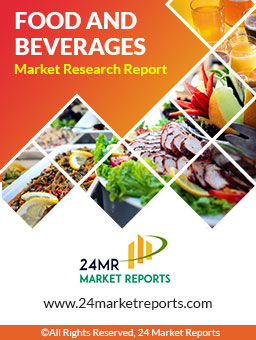
Download FREE Report Sample
Download Free sampleMARKET INSIGHTS
Global fish protein products market size was valued at USD 3.52 billion in 2024. The market is projected to grow from USD 3.69 billion in 2025 to USD 4.87 billion by 2032, exhibiting a CAGR of 4.9% during the forecast period.
Fish protein products are nutrient-dense derivatives sourced from marine life, including whole fish, fish waste, or processed fishmeal. These products exist in various forms such as isolates, concentrates, and hydrolysates - each offering unique functional properties. With high concentrations of omega-3 fatty acids (EPA and DHA), essential amino acids, and bioactive peptides, these products deliver cardiovascular and cognitive health benefits that synthetic alternatives struggle to match.
The market expansion stems from dual demand drivers: nutritional supplementation and functional food innovation. While the sports nutrition sector consumes 28% of production for muscle recovery applications, the infant formula segment shows the fastest growth at 6.2% CAGR due to increasing recognition of marine-sourced proteins' digestibility advantages. However, sustainability concerns around overfishing have prompted manufacturers like ScanBio Marine Group to develop advanced byproduct utilization technologies, converting 95% of fish processing waste into high-value protein ingredients.
Rising Health Consciousness and Protein-Rich Diet Trends to Accelerate Market Growth
The global fish protein products market is experiencing robust growth fueled by increasing consumer awareness about the health benefits of protein-rich diets. Fish protein contains all essential amino acids while being low in saturated fats, making it an attractive option for health-conscious consumers. With obesity rates reaching 13% of the global adult population and lifestyle diseases becoming prevalent, more consumers are turning to high-protein alternatives. The sports nutrition sector alone accounts for nearly 25% of total fish protein consumption, as athletes and fitness enthusiasts recognize its superior muscle recovery benefits compared to plant-based proteins.
Sustainable Aquaculture Advancements to Boost Production Capacity
To know more about market statistics, Download a FREE Sample copy
Technological innovations in aquaculture are significantly enhancing fish protein production efficiency. Modern recirculating aquaculture systems (RAS) have increased yields by 40% while reducing water usage by up to 95% compared to traditional methods. This sustainable approach helps meet the growing demand, with global aquaculture production reaching 122 million metric tons in 2022. Major producers are investing in automated feeding systems and AI-powered monitoring to optimize fish growth conditions, ensuring consistent quality and supply of protein-rich raw materials.
The pharmaceutical industry's adoption of fish-derived bioactive peptides is creating new application avenues. These peptides demonstrate exceptional efficacy in wound healing and cardiovascular treatments, with clinical trials showing 30% faster recovery rates compared to synthetic alternatives.
➤ For instance, leading pharmaceutical companies are investing over $500 million annually in marine-derived peptide research, with several products in late-stage clinical trials.
Furthermore, strategic partnerships between fisheries and food manufacturers are streamlining supply chains, reducing processing costs by up to 20% while maintaining premium product quality standards.
Stringent Food Safety Regulations and Quality Standards to Limit Small-scale Producers
The fish protein industry faces significant challenges from increasingly rigorous food safety standards across major markets. Compliance with regulations like the EU's Food Safety Authority guidelines and FDA's Seafood HACCP requires substantial capital investment in testing equipment and quality control systems. Smaller producers, who account for approximately 35% of the market, often struggle to meet these requirements, leading to consolidation pressures. Recent data shows that compliance costs have increased by 18% in the past three years alone, creating barriers to entry for new market participants.
Supply Chain Vulnerabilities to Impact Market Stability
Climate change and geopolitical factors are creating volatility in raw material supplies, with fish stock fluctuations increasing by 12% annually since 2020. Overfishing concerns have led to strict catch quotas in key regions, reducing availability of premium species by 8-10% each year. Transportation costs have surged by 25% due to fuel price volatility, particularly affecting import-dependent markets. These supply chain challenges are prompting manufacturers to explore alternative protein sources, potentially diverting investments from fish protein R&D.
Emerging Markets and Premium Product Segments to Drive Future Expansion
Developing economies in Asia and Africa present significant growth opportunities, with fish protein consumption projected to grow at 7.2% CAGR in these regions through 2030. Rising disposable incomes and urbanization are driving demand, particularly for convenient protein formats like ready-to-drink shakes and snack bars. The premium collagen segment is expanding rapidly, with sales growing 22% annually as consumers recognize its anti-aging and joint health benefits.
Innovative product formulations combining fish protein with functional ingredients are gaining traction, particularly in the nutraceutical sector. These high-value products command 30-40% price premiums while addressing specific health concerns like metabolic syndrome and cognitive decline. Strategic acquisitions in this space reached $1.2 billion in 2023 as major players seek to expand their high-margin product portfolios.
Consumer Perception and Allergen Concerns to Hinder Adoption Rates
Despite its nutritional benefits, fish protein faces consumer perception challenges, with 15% of potential customers hesitant due to taste preferences or odor concerns. Food allergies affect approximately 2% of the global population, creating safety considerations for product labeling and manufacturing processes. Manufacturers must invest heavily in sensory enhancement technologies and clear allergen declarations to overcome these barriers.
Other Challenges
Processing Technology Limitations
Traditional fish protein extraction methods result in 35-40% yield losses, significantly impacting production economics. Developing more efficient hydrolysis and membrane filtration techniques requires substantial R&D investment, with full-scale implementation often taking 3-5 years to commercialize.
Price Volatility
Raw material costs fluctuate up to 20% seasonally, creating pricing challenges for manufacturers trying to maintain stable consumer prices. This volatility particularly impacts small to medium enterprises operating with thinner profit margins.
Fish Protein Powder Segment Leads Due to High Convenience and Extended Shelf Life
The market is segmented based on type into:
Powder
Subtypes: Fish protein isolate, fish protein concentrate, and others
Liquid
Hydrolyzed
Subtypes: Enzymatic hydrolysis, acid hydrolysis
Others
Sports Nutrition Segment Dominates Due to Rising Demand for Protein Supplements
The market is segmented based on application into:
Food & Beverages
Sports Nutrition
Pharmaceuticals
Cosmetics
Others
Marine Fish Segment Leads Owing to Higher Protein Content and Wider Availability
The market is segmented based on source into:
Marine fish
Subtypes: Tuna, salmon, cod, and others
Freshwater fish
Seaweeds
Online Retailers Segment Shows Strong Growth Due to E-commerce Expansion
The market is segmented based on distribution channel into:
Supermarkets/Hypermarkets
Specialty Stores
Online Retailers
Direct Sales
Strategic Product Innovation and Sustainability Initiatives Drive Market Competition
The global fish protein products market features a fragmented competitive landscape, with multinational corporations, regional specialists, and innovative startups vying for market share. Leading players are focusing on sustainable sourcing practices and advanced processing technologies to meet the growing demand for high-quality marine proteins across multiple industries.
Omega Protein Corporation, now part of Cooke Inc., maintains a dominant position with its vertically integrated supply chain and diverse product portfolio. The company's acquisition strategy has strengthened its presence in North America and Europe, while investments in hydrolyzation technology allow for premium protein isolates with enhanced bioavailability.
Emerging players like ScanBio Marine Group and Blue Wave Marine Ingredients are gaining traction through specialized offerings. Their focus on traceability and eco-certified products resonates with environmentally conscious consumers in European and North American markets. Meanwhile, Mukka Seafood Industries leverages India's growing aquaculture sector to provide cost-competitive protein concentrates for the Asian market.
The competitive intensity is further heightened by regional champions such as Qingdao Future Group in China and Apelsa Guadalajara in Latin America, who combine local production advantages with tailored product formulations. These companies are progressively expanding into international markets through strategic partnerships and joint ventures.
Omega Protein Corporation (U.S.)
Blue Wave Marine Ingredients (U.S.)
Bio-Oregon Protein (U.S.)
Colpex International (Peru)
Mukka Seafood Industries (India)
ScanBio Marine Group (Norway)
Ingredients Inc. (U.S.)
Peterlabs Holdings (Malaysia)
Siam Industries International (Thailand)
Apelsa Guadalajara (Mexico)
Bio Phoenix Formulations (India)
Qingdao Future Group (China)
AHS Advanced Health Solutions (Israel)
The global fish protein products market is experiencing robust growth, projected to reach US$ 4.87 billion by 2032 from US$ 3.52 billion in 2024, at a steady CAGR of 4.9%. This surge is primarily fueled by the increasing consumer preference for sustainable and nutrient-dense protein alternatives. With rising awareness about the environmental impact of land-based meat production, fish protein has emerged as a highly efficient protein source, requiring significantly lower freshwater and land resources compared to traditional livestock. The market has witnessed a 12% year-on-year increase in demand for fish protein isolates and concentrates, particularly in North America and Europe where health-conscious consumers are driving adoption.
Expansion in Functional Food Applications
Fish protein is increasingly being incorporated into functional foods due to its high bioavailability and rich omega-3 fatty acid content. The sports nutrition segment alone accounts for 28% of total fish protein applications, with manufacturers developing specialized hydrolysates for muscle recovery. Furthermore, clinical studies have validated the cardiovascular benefits of marine peptides, leading to their incorporation in medical nutrition products targeting cholesterol management. This diversification beyond traditional fish meal applications represents a significant growth vector for market players.
Recent breakthroughs in enzymatic hydrolysis and membrane filtration technologies have revolutionized fish protein extraction, improving yield efficiency by 30-35% compared to conventional methods. These advancements have enabled manufacturers to reduce waste while enhancing product purity, particularly for premium-grade isolates used in pharmaceutical applications. The development of cold-processing techniques has been particularly impactful, preserving heat-sensitive nutrients while meeting stringent quality requirements for infant formula and clinical nutrition products. Such innovations are critical as the industry moves toward more sustainable production models.
North America
The North American fish protein products market is driven by increasing health consciousness and demand for sustainable protein sources. Fish protein isolates and hydrolysates are gaining traction, particularly in sports nutrition and dietary supplements. The U.S. dominates the region due to its well-established food and pharmaceutical industries, with rising demand for omega-3 fortified products. Regulatory support for marine-derived ingredients and increasing vegetarianism further propel market growth. The region accounted for approximately 28% of global revenue share in 2024, with Canada showing steady growth due to its thriving aquaculture sector.
Europe
Europe represents a technologically advanced market for fish protein products, with stringent quality standards favoring high-value applications. The EU's emphasis on sustainable fishing practices and circular economy principles drives innovation in fish waste valorization. Scandinavian countries lead in hydrolysate production, while Germany and France dominate in pharmaceutical and cosmetic applications. The market faces challenges from plant-based protein alternatives but maintains growth through superior bioavailability claims. Regulatory frameworks like Novel Food regulations ensure product safety while encouraging research into new marine-derived bioactive compounds.
Asia-Pacific
This rapidly growing region accounts for over 40% of global fish protein consumption, fueled by expanding aquaculture production and traditional dietary preferences. China leads in volume production, while Japan excels in high-quality fish protein isolates for nutraceuticals. Southeast Asian countries show increasing demand in applications ranging from animal feed to functional foods. Though price sensitivity limits premium product adoption currently, rising disposable incomes and health awareness are driving a gradual shift toward value-added fish protein formats. India's growing sports nutrition market presents significant opportunities for market players.
South America
The South American market shows promising growth potential, supported by abundant marine resources along coastal nations. Peru and Chile lead in fishmeal production, while Brazil is emerging as a key consumer market for sports nutrition products. Economic volatility affects premium product adoption, but growing middle-class populations and increasing awareness of protein supplementation support steady market expansion. Regional players are focusing on sustainable sourcing methods to meet international export standards, particularly for European and North American markets.
Middle East & Africa
This region exhibits a developing market characterized by growing demand but limited local production capabilities. GCC countries import high-value fish protein products for sports nutrition and healthcare applications, driven by affluent consumer segments. African coastal nations show potential for fish waste valorization projects, with international collaborations improving processing technologies. The market faces challenges including inconsistent supply chains and preference for traditional protein sources, but urbanization and lifestyle changes are expected to accelerate adoption over the forecast period.
This market research report offers a holistic overview of global and regional markets for the forecast period 2025–2032. It presents accurate and actionable insights based on a blend of primary and secondary research.
✅ Market Overview
Global and regional market size (historical & forecast)
Growth trends and value/volume projections
✅ Segmentation Analysis
By product type or category
By application or usage area
By end-user industry
By distribution channel (if applicable)
✅ Regional Insights
North America, Europe, Asia-Pacific, Latin America, Middle East & Africa
Country-level data for key markets
✅ Competitive Landscape
Company profiles and market share analysis
Key strategies: M&A, partnerships, expansions
Product portfolio and pricing strategies
✅ Technology & Innovation
Emerging technologies and R&D trends
Automation, digitalization, sustainability initiatives
Impact of AI, IoT, or other disruptors (where applicable)
✅ Market Dynamics
Key drivers supporting market growth
Restraints and potential risk factors
Supply chain trends and challenges
✅ Opportunities & Recommendations
High-growth segments
Investment hotspots
Strategic suggestions for stakeholders
✅ Stakeholder Insights
Target audience includes manufacturers, suppliers, distributors, investors, regulators, and policymakers
-> Key players include Omega Proteins, Blue Wave Marine Ingredients, Bio-Oregon Protein, Colpex International, Mukka Seafood Industries, and ScanBio Marine Group, among others.
-> Key growth drivers include rising health consciousness, increasing demand for alternative protein sources, and expanding applications in food & beverages and sports nutrition industries.
-> Asia-Pacific is the fastest-growing region, while North America remains a dominant market due to high consumer awareness.
-> Emerging trends include sustainable fishing practices, development of fish protein hydrolysates, and incorporation in functional foods.

Speak to our Custom Research Team and get the Custom Research in a budget
Custom ResearchFrequently Asked Questions ?
A license granted to one user. Rules or conditions might be applied for e.g. the use of electric files (PDFs) or printings, depending on product.
A license granted to multiple users.
A license granted to a single business site/establishment.
A license granted to all employees within organisation access to the product.
Upto Working 24 to 48 hrs
Upto 72 hrs max - Weekends and Public Holidays
Online Payments with PayPal and CCavenue
Wire Transfer/Bank Transfer
Hard Copy




 Industry Market Size
Industry Market Size SWOT Analysis
SWOT Analysis Industry Major Players
Industry Major Players Revenue Forecasts
Revenue Forecasts Historical and Forecast Growth
Historical and Forecast Growth Profitability Analysis
Profitability Analysis
























